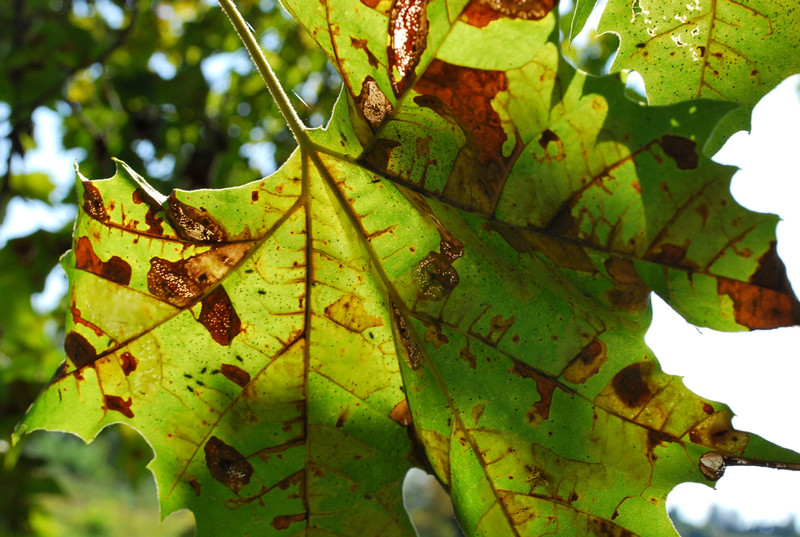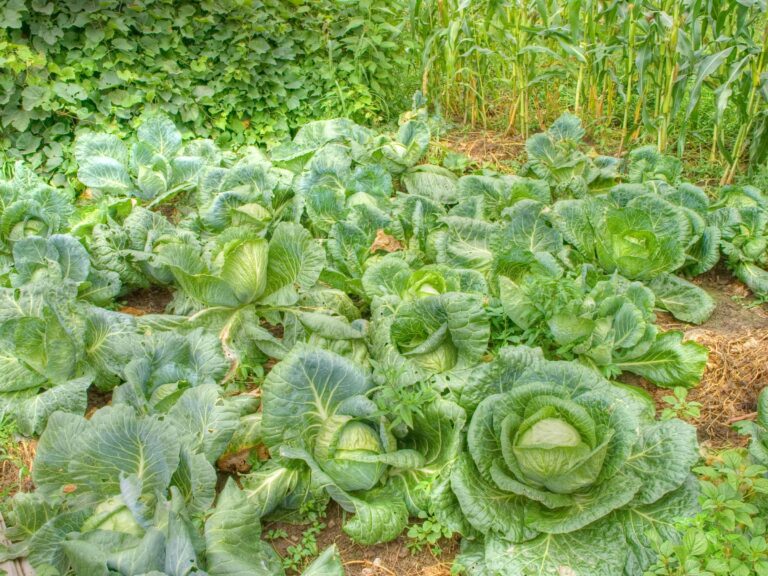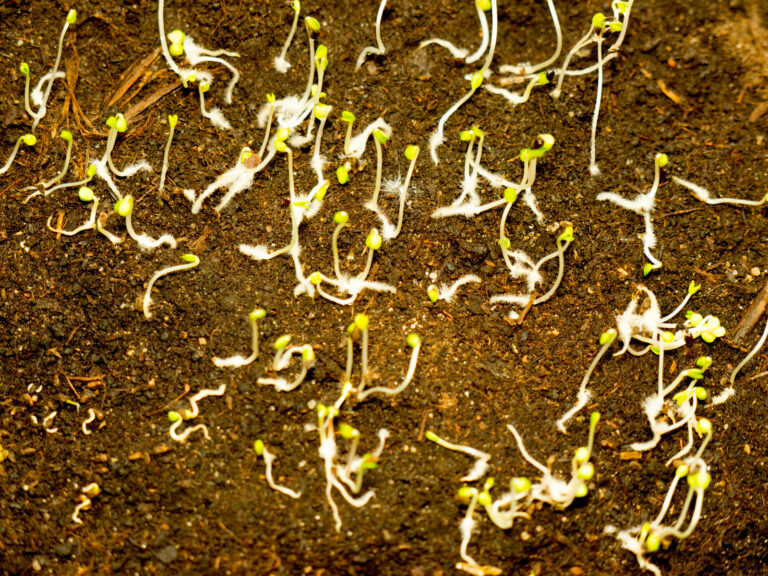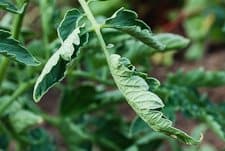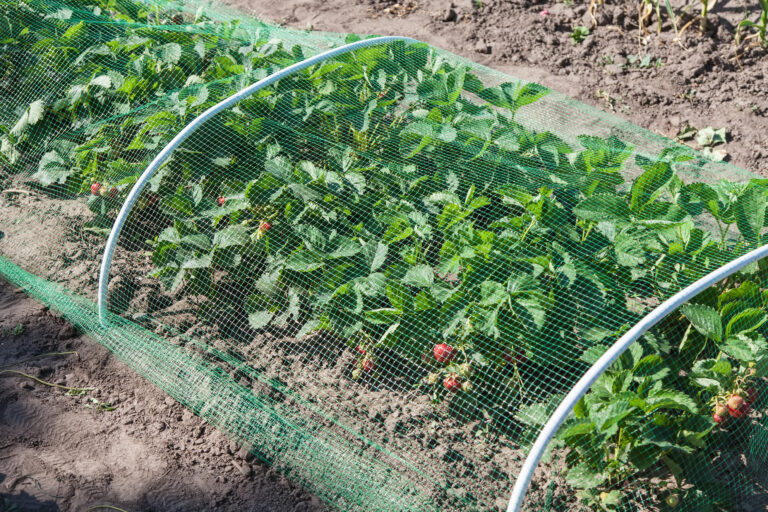Anthracnose Leaf Spot Fungus Disease
Anthracnose—also called leaf spot fungus–is a catch-all name to describe several diseases caused by fungi that flourish in wet weather.
Anthracnose causes small, dark spots with yellow halos to develop on leaves. The spots become sunken lesions. Lesions may also form on stems and fruits. Leaf spots grow larger, become angular, and then dry until the centers of the spots fall out leaving holes in the leaves. Infected leaves often drop prematurely. Spore masses that look like pink slime may ooze from the lesions. Diseased stems and twigs die back.
Disease range: Eastern and Central United States, southeastern Canada, seldom seen in arid climates.
Scientific name: Colletotrichum spp., Gloeosporium spp.
Good Products for Pest and Disease Control at Amazon:
- Garden Safe Snail and Slug Bait
- Bonide Sulfur Fungicide
- Monterey BT Caterpillar Killer
- Neem Bliss 100-% Cold Pressed Neem Oil
- Safer Brand Insect Killing Soap
- PyGanic Botanical Insecticide
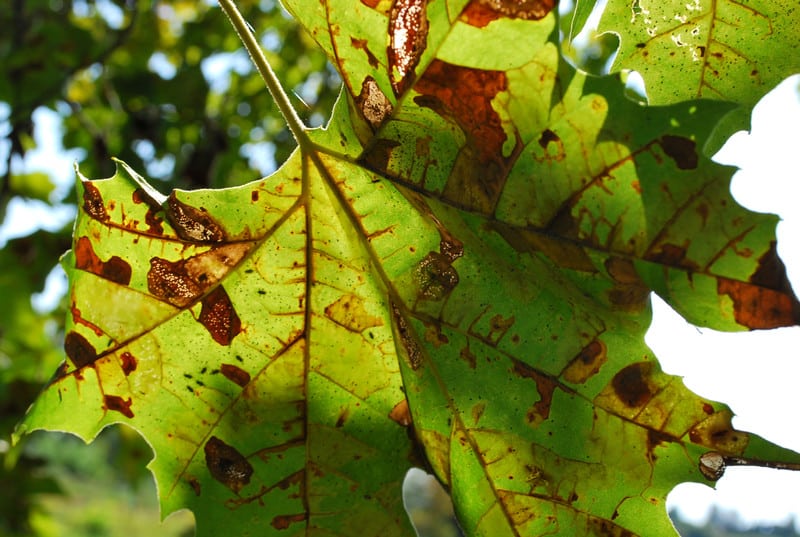
Anthracnose lef spot target plants
Plants that can be attacked by anthracnose leaf spot include beans, cucumber, peppers, potatoes, melons, tomatoes, watermelons, gourds (usually not a problem on peas, squash, or pumpkin), and bramble fruits. Trees: dogwood, ash, elm, maple, oak, sycamore, and other trees.
Anthracnose leaf spot damage
Beans
- Bean leaves develop dark red or black spots on the undersides; spots are often elongated dark brown and may follow veins. Spots may appear on the upper surface of leaves.
- Bean pods develop spots or lesions that may be filled with pink masses of spores. Seeds in pods may have dark spots.
Chinese cabbage
- Chinese cabbage leaves develop small, round gray spots on leaves; elongated spots develop on stems.
Cucumbers
- Cucumber leaves develop yellow, water-soaked spots on leaves; the spots turn brown
- Cucumber stems may develop pink, jelly-like lesions; when stems are affected plants may drop leaves.
- Cucumber fruits develop dark, sunken areas with pink spores.
Lettuce
- Lettuce leaves develop small, round gray spots; elongated spots develop on stems.
Melons
- Melon leaves develop light brown spots that turn to reddish brown on muskmelons and black on watermelons. Spots enlarge. The leaf may shrivel and die.
- Melon stems develop water-soaked and elongated; leaf stems become sunken and brown.
- Melon and cucumber fruits develop dark, sunken lesions.
Peppers
- Pepper fruits develop small, circular, water-soaked spots as fruit approaches maturity; as spots darken and deepen they develop concentric circles; in warm weather, the spots soon penetrate and spoil the fruit.
Potatoes
- Potato stems develop lesions just below the soil surface.
- Potato tubers develop black dots on the skin.
Radishes
- Radishes develop small, round gray spots on leaves; elongated spots develop on stems.
Raspberries
- Raspberries (black) purplish circular sunken spots develop on lower canes; spot centers turn gray; berries ripen unevenly.
Rhubarb
- Rhubarb stems and petioles develop water-soaked spots
Strawberries
- Strawberry stems girdle before they can root.
Tomatoes
- Tomato fruits develop tan spots that become dark depressed spots; concentric rings are often visible in the spots.
- Tomatoes fruits develop small, circular, water-soaked spots as fruit approaches maturity; as spots darken and deepen, they develop concentric circles; in warm weather, the spots soon penetrate and spoil the fruit.
Turnips
- Turnips develop small, round gray spots on leaves; elongated spots develop on stems.
How Anthracnose spreads
Fungi spores are spread by wind, rain, insects, and gardeners handling wet plants. Spores can enter plants through wounds or through leaves when plants are wet. Spores may also be carried in infected seeds. Spores germinate only in a water film. Spores grow at temperatures between 59°-77°F.
Anthracnose life cycle
Fungi overwinter as mycelium in seed and in garden debris. Spores formed in the spring are splashed on host plants where they germinate. Ne fungi form a peg at the end of the hyphae which can mechanically invade plant tissue.
Anthracnose organic controls and prevention
Wetness encourages Anthracnose fungi. Here are ways to control or prevent Anthracnose:
- Grow resistant varieties. Use certified disease-free seed grown in the western United States.
- Avoid overhead irrigation. Avoid wetting foliage.
- Grow crops on trellises or poles to encourage good air circulation.
- Mulch around plants to decrease splashing from rain or sprinkler irrigation.
- Trim overhead trees or shrubs to increase sunlight to sun-loving plants.
- Avoid working among wet plants.
- Prune out infected branches or twigs.
- Remove infected plants from the garden.
- Burn or dispose of diseased plants.
Anthracnose non-organic controls
Fungicides include lime sulfur, Bordeaux mixture, and chlorothalonil. These fungicides may be harmful and toxic to humans, animals, beneficial insects, bees, and aquatic animals when not applied properly. Consult your cooperative extension for application information.
General prevention of fungal diseases
- Improve air circulation around plants.
- Mulch around the base of plants to reduce water splashing.
- Do not use overhead watering.
- Control weeds.
- Rotate crops.
Related articles:
Vegetable Garden Diseases Problem Solver
Vegetable Garden Organic Weed Control
Vegetable Garden Organic Pest Control
Garden Planning Books at Amazon:

